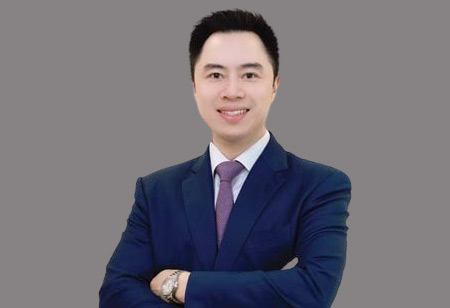Thank you for Subscribing to Healthcare Business Review Weekly Brief

AI Adoption and Quality Improvement in Digital Healthcare
Healthcare Business Review
Alastair Mah serves as the professional lead for all medical staff and services, overseeing clinical quality, research, and academic governance across the organization. He holds Fellowships with esteemed institutions including the Royal Australasian College of Medical Administrators, Hong Kong College of Community Medicine, Australasian College of Health Service Management, and Hong Kong College of Health Service Executives.
Could you describe your journey and responsibilities at United Family Healthcare?
I completed my medical degree at the University of Melbourne and underwent specialist training in Australia. I then served as the chief medical officer of a large healthcare organization in Victoria before relocating to Hong Kong in 2018. There, I joined the Hong Kong Hospital Authority’s quality and safety division and subsequently assumed the role of vice president of medical affairs at United Family Healthcare in 2021. My primary interests revolve around clinical governance and the utilization of AI in healthcare, particularly in enhancing patient safety and quality improvement.
What are some significant challenges in the digital healthcare space?
In the 1990s, heightened focus on healthcare safety brought about substantial changes and enhancements. The Institute of Medicine in the US published a report highlighting preventable adverse events leading to numerous deaths, causing significant economic burdens. This prompted consumer-centric approaches and greater consumer involvement in care, yielding positive outcomes.
Addressing this challenge is intricate, and it’s evident that healthcare organizations vary in their success in eliminating patient harm and risk. This disparity exists globally, whether in the United States or China. While renowned institutions like Mayo Clinic and Johns Hopkins excel in healthcare delivery, lesser-known organizations can pose unnoticed risks to patients’ well-being.
In China, the quality and safety movement began later but is rapidly progressing. The Chinese government is implementing significant changes and policies to prioritize patient safety, care quality, and consumer experience in healthcare evaluations.
It’s an ongoing journey, and a transformative factor is the rise of advanced language models like ChatGPT4. This development has numerous applications in non-clinical and clinical contexts, accessible within China and globally. Integrating technology in healthcare aids in medical documentation, translation services, chronic disease management, remote patient monitoring, telemedicine, and clinical decision support. AI has promising applications in ChatGPT, but establishing a solid framework for technology adoption is a challenge, given its evolving nature.
Considering the rise of AI, ChatGPT, and telehealth, how do you ensure successful training and integration within the quality and safety framework?
Health services should review information governance legislation before technology implementation, adhering to country-specific guidelines such as GDPR, Singapore’s framework, and China’s regulations. Non-governmental frameworks like PwC’s responsible AI framework provide valuable insights.
To responsibly adopt AI or any technology, establish a comprehensive process involving key stakeholders. They assess factors like ROI, implementation costs, efficiency gains, and accuracy enhancements. Address data security and workflow integration with regulations. AI’s capabilities may exceed human understanding, requiring effective communication with staff, users, and patients in simple terms. This involves continuous development and improvement.
Any advice for peers and aspiring professionals?
While adopting clinical AI in digital healthcare is inevitable for efficiency, organizations should introduce products cautiously to avoid staff dissatisfaction and losses. Quality improvement is a gradual, persistent process, not just setting standards. Organizations should continue building quality. Comparing organizations is challenging, but the principle remains consistent.









